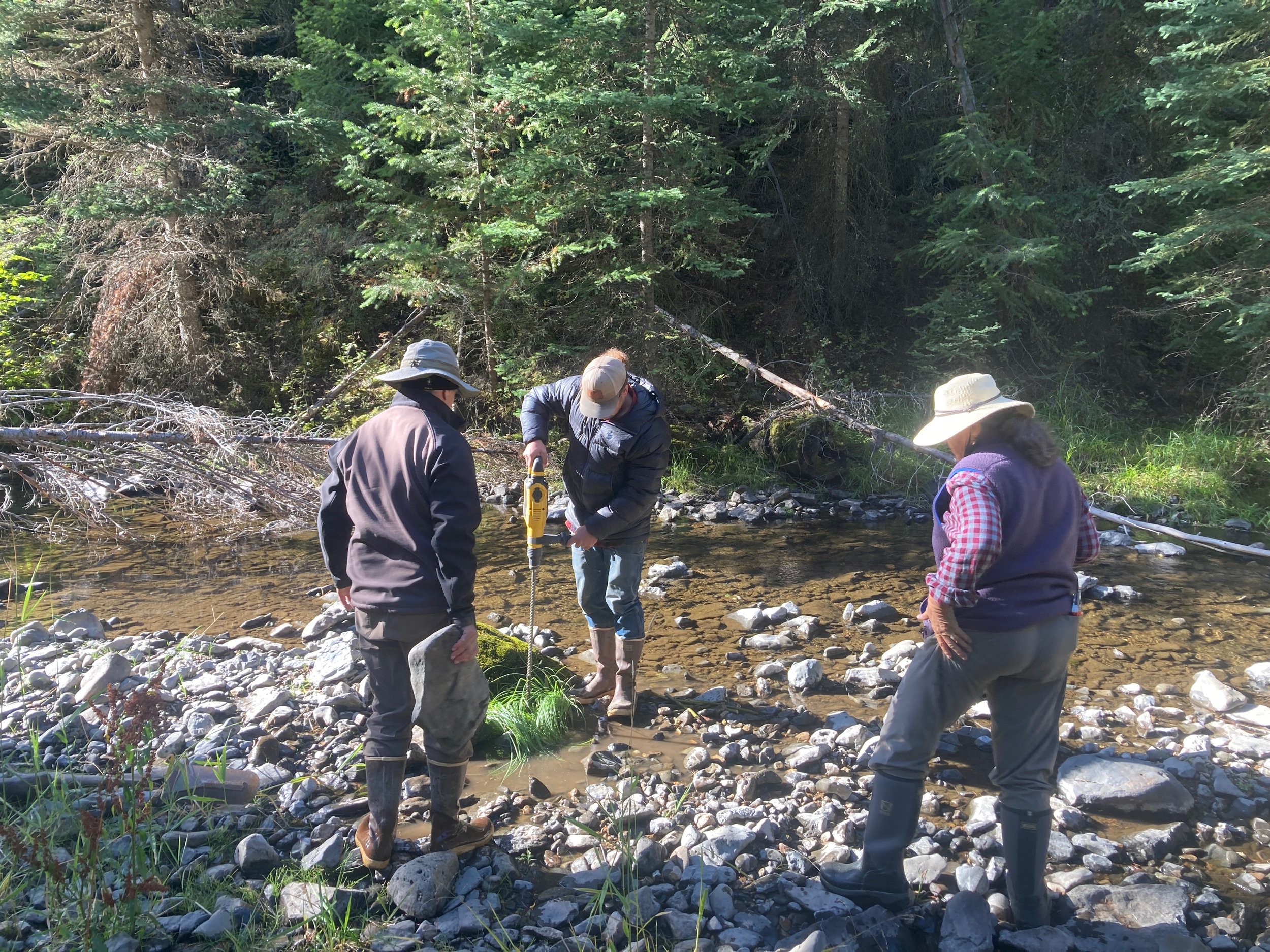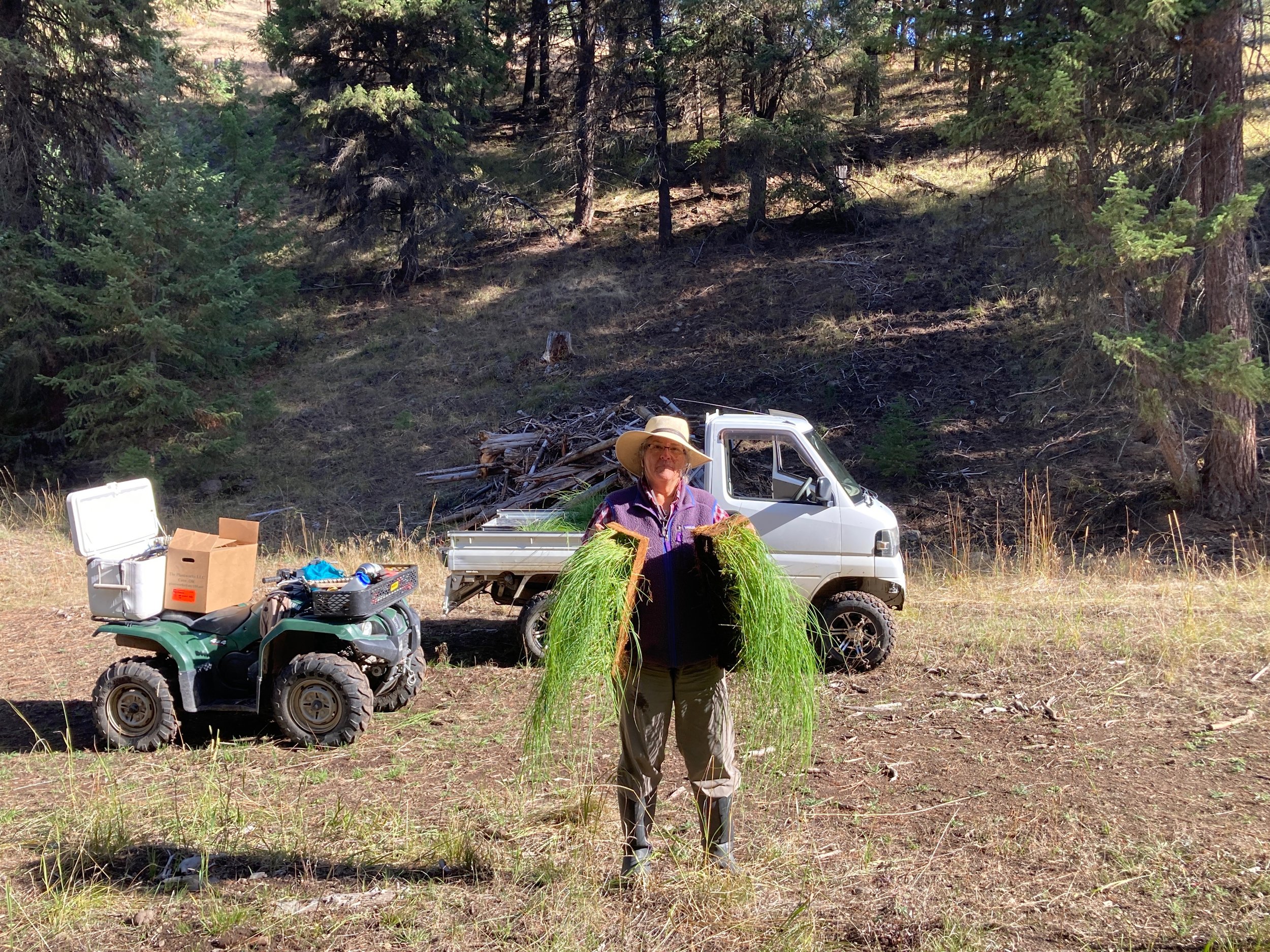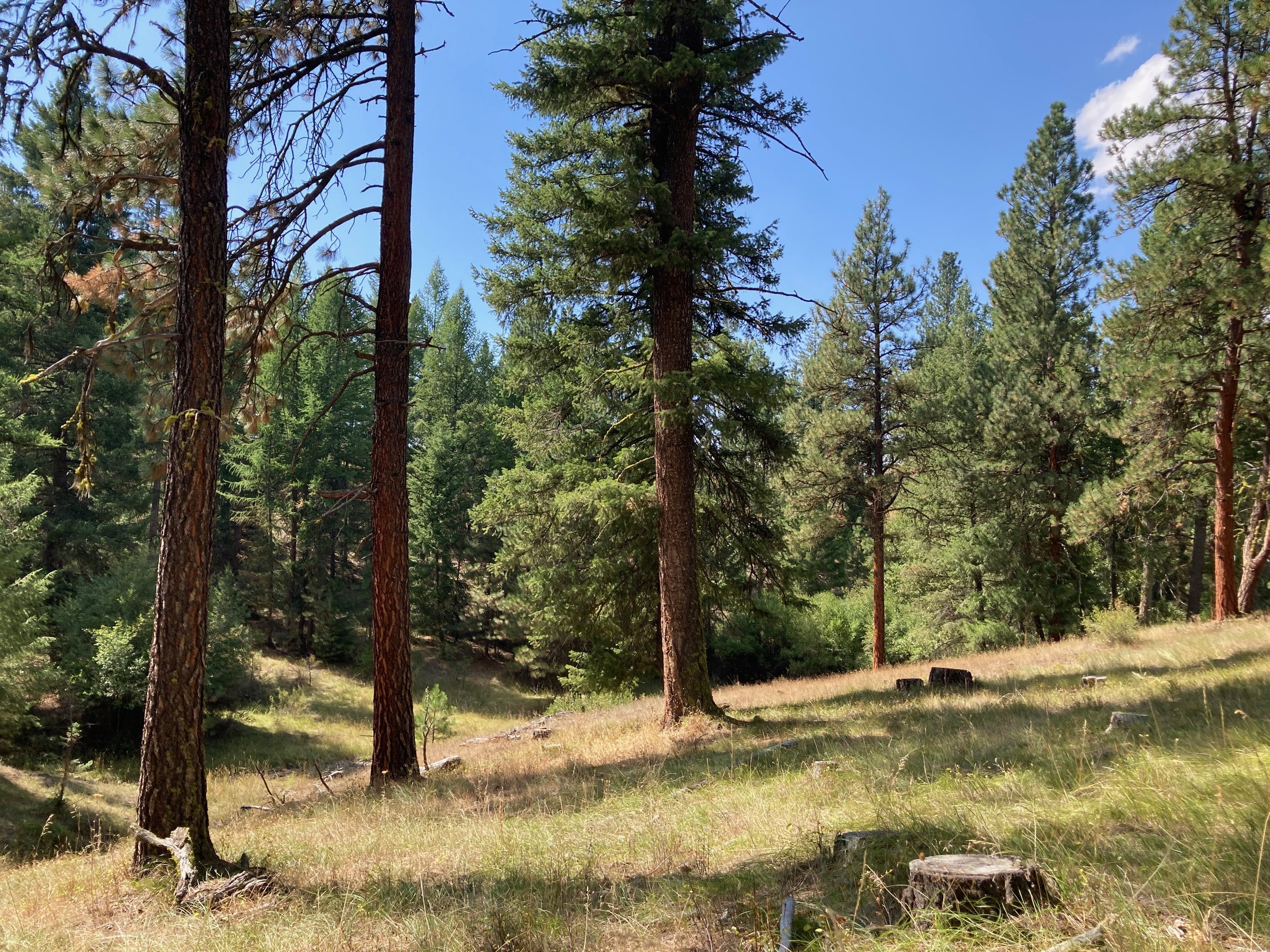Poor forest management and climate change have driven the surge in massive forest fires. We saw that coming 35 years ago and started restoring 400 acres of forest in the Blue Mountains of NE Oregon. In the mid 1930’s this old growth forest was clear cut. Massive erosion ensued destroying fish bearing streams and downstream meadows. This heavy logging also significantly modified the historical structure, composition and function. The forest has regrown. 35 years ago we saw a thicket of small and medium trees, instead of widely spaced big trees. There is not enough light and moisture to grow a healthy stand of trees. These are perfect conditions for a massive wildfire.
Over time we have thinned the small and medium sized trees leaving all of the bigger ones. This summer, with help from NRCS we thinned 78 acres of 6-to-8-inch trees. We have created more open patches for understory plants for wildlife habitat. Over time we have created a mixed aged stand of all tree sizes and species. This has helped to create a healthy fire-resistant forest. Taking a landscape approach, we have been careful not to do any work near the two creeks. An elk calving area is also off limits. We have left thick patches for foxes, coyotes and bears. No work anywhere close to eagle and owl nests. Along the creeks we have been adding biodiversity by planting more cottonwoods, aspens and dogwoods.
It has been a long process, but our work is showing promise. A healthy fire resistant forest with lot’s of wildlife has emerged.



